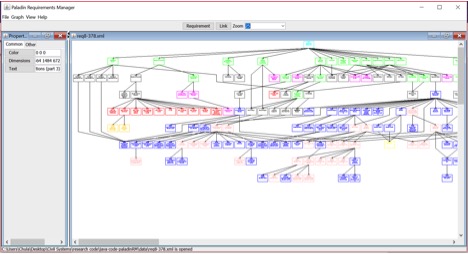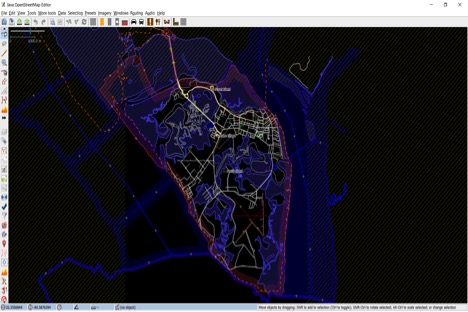
Figure 1. Visualizing graphs of requirements in PaladinRM.
 ENCE 688R Projects, Spring Semester, 2019
ENCE 688R Projects, Spring Semester, 2019
[ Project 1 ]: Visualizing Graphs of Requirements with JavaFX
[ Project 2 ]: Using Java Network Models to Simulate DoD Operation and
Maintenance Investment Strategies before Natural Disasters
[ Project 3 ]: Route Selection to Minimize Hill Climbing
[ Project 4 ]: ...
Title: Visualizing Graphs of Requirements with JavaFX
Author: Chula Gangsa
Abstract: Requirements engineers need software tools to help them manaage, organize and visualize graphs of requirements for a system design. These tools should allow an engineer to view the various levels and categories of requirements as well as relations between pairs of requirements.

Figure 1. Visualizing graphs of requirements in PaladinRM.
The PaladinRM (RM = Requirements Management) toolbox was developed by Austin and co-workers [1] in 2006. As illustrated in Figure 1, this software is able to upload an XML requirement data file to the graphical user interface (GUI), visualize the requirements in a variety of layouts (e.g., tree view, hierarchy view etc) and exporting the graph in a pdf format. The GUI of PaladinRM is currently implemented in Java Swing.
The purpose of this project will be to design a new GUI for PaladinRM based on JavaFX. We will explore the feasibility of using FXML for specification of the layout of graphical windows and hooks to the backend controller routines. Our long-term goal (beyond this immediate project) is to add functionality for viewing the relationship of individual requirements to ontologies.
References
Title: Using Java Network Models to Simulate DoD Operation and Maintenance Investment
Strategies before Natural Disasters
Author: Paul Magoulick
Abstract: Utility infrastructure on Department of Defense (DoD) installations includes things such as roads, telecommunications, natural gas, and networks for power and water distribution. These networks are becoming increasingly interconnected. At the same time, they are also becoming increasingly important in ensuring overall mission success. Installation commanders, engineers, and disaster preparedness planners strive to make efficient and effective infrastructure investment decisions before disasters and other interruptions to ensure the least disruption to the day-to-day operations after these events. To date, the majority of mitigation investments are evaluated solely in context of their contribution to ensuring that the system at hand is operable after disasters, and not how mitigation might improve operability in dependent sectors nor how mitigation contributes to success of the installation's mission.

Figure 2. U.S. Marine Corps Recruit Depot, Parris Island, South Carolina.
This project will look at one infrastructure topological network mode to quantify reliability of the electrical distribution network for an actual installation. It will use data from Open Street Map and GIS for the U.S. Marine Corps Recruit Depot Parris Island, South Carolina. The corresponding networks will be imported into JGraphT and analyzed using a variety of algorithms.
References
Title: Route Selection to Minimize Hill Climbing
Author: Oluwaseun Harrison Adetunji
Abstract: The goal of this project is to create a Java code that can find the best route between two points, using the lowest sum-total amount of elevation change between the two places. This route finding strategy finds for a user the best route that minimizes hill climbing.

Figure 3. ...
TBD. More detailed abstract and references to come ...
References
Title: ...
Author: ...
Abstract: ...

Figure 4. ...
In this project, we will ...
References
Developed in April 2019 by Mark Austin
Copyright © 2019, Department of Civil and Environmental Engineering, University of Maryland